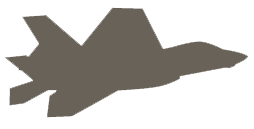PATUXENT RIVER, Md. –
The Naval Aviation Training Systems and Ranges Program Office recently delivered the first Aircrew Procedures Trainer (APT) device to Carrier Airborne Early Warning Squadron (VAW) 125 at Marine Corps Air Station (MCAS) Iwakuni, Japan.
This delivery is the first pilot trainer that will be embedded with a forward deployed unit within the VAW community, completing the Navy’s planned platform training system deliveries for deployed aircrew.
“The delivery of this training device to VAW-125 will revolutionize the way Navy forward-deployed forces train and enable them to win the high-end fight,” said Capt. Kevin McGee, program manager. “The team put in significant effort to deliver this capability and ensure our forward-deployed forces are well equipped to maintain and improve their skills, even when deployed.”
The APT device provides deployed pilots realistic, high-fidelity simulator training in basic flight operations, navigation, emergency procedures, crew resource management, tactics, instrument procedures, carrier familiarization and other capabilities. Training time in the simulator minimizes risk by providing a safe environment in which pilots can both practice for muscle memory and learn new skills that can be applied in an operational environment.
The program office originally procured a trainer for Norfolk, Virginia. One month after the contract award, Airborne Command and Control and Logistics Wing signed and approved a requirement for a new device to be delivered to MCAS Iwakuni, Japan. Recognizing the urgent need, the Naval Air Warfare Center Training Systems Division team, along with industry partners, developed a creative solution to quickly meet both this new requirement and the current needs of the Fleet. Within two months of the announcement, the program office E-2 training systems team negotiated the new delivery location.
“As with many contracting actions, there were complications and challenges that had to be overcome for this device to be delivered, but with strong partnerships among all stakeholders this new high-fidelity trainer will help maintain the highest standards of readiness to meet Carrier Air Wing goals,” said Dave Adams, the program office E-2 training systems team lead.
From the Naval Aviation Training Systems and Ranges Program Office. 